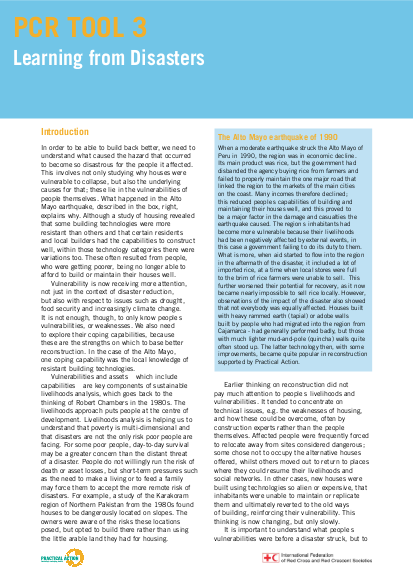
In order to be able to build back better, we need to understand what caused the hazard that occurred to become so disastrous for the people it affected. This involves not only studying why houses were vulnerable to collapse, but also the underlying causes for that; these lie in the vulnerabilities of people themselves. What happened in the Alto Mayo earthquake, described in the box, right, explains why. Although a study of housing revealed that some building technologies were more resistant than others and that certain residents and local builders had the capabilities to construct well, within those technology categories there were variations too. These often resulted from people, who were getting poorer, being no longer able to afford to build or maintain their houses well. Vulnerability is now receiving more attention, not just in the context of disaster reduction, but also with respect to issues such as drought, food security and increasingly climate change. It is not enough, though, to only know people’s vulnerabilities, or weaknesses. We also need to explore their coping capabilities, because these are the strengths on which to base better reconstruction. In the case of the Alto Mayo, one coping capability was the local knowledge of resistant building technologies. Vulnerabilities and assets – which
Resource collections
- Accountability to affected populations (AAP)
- Earthquakes
- Evaluating humanitarian action
- Learning from crises
- Topics
- UN Habitat - Urban Response Collection
- Urban Response - Urban Crisis Preparedness and Risk Reduction
- Urban Response Collection - Community Engagement and Social Cohesion
- Urban Response Collection - Economic Recovery
- Urban Response Collection - Environment and Climate Change
- Urban Response Collection - Housing, Land and Property
- Urban Response Collection - Urban Crisis Response, Recovery and Reconstruction
- Urban Response Collection - Urban Resilience
